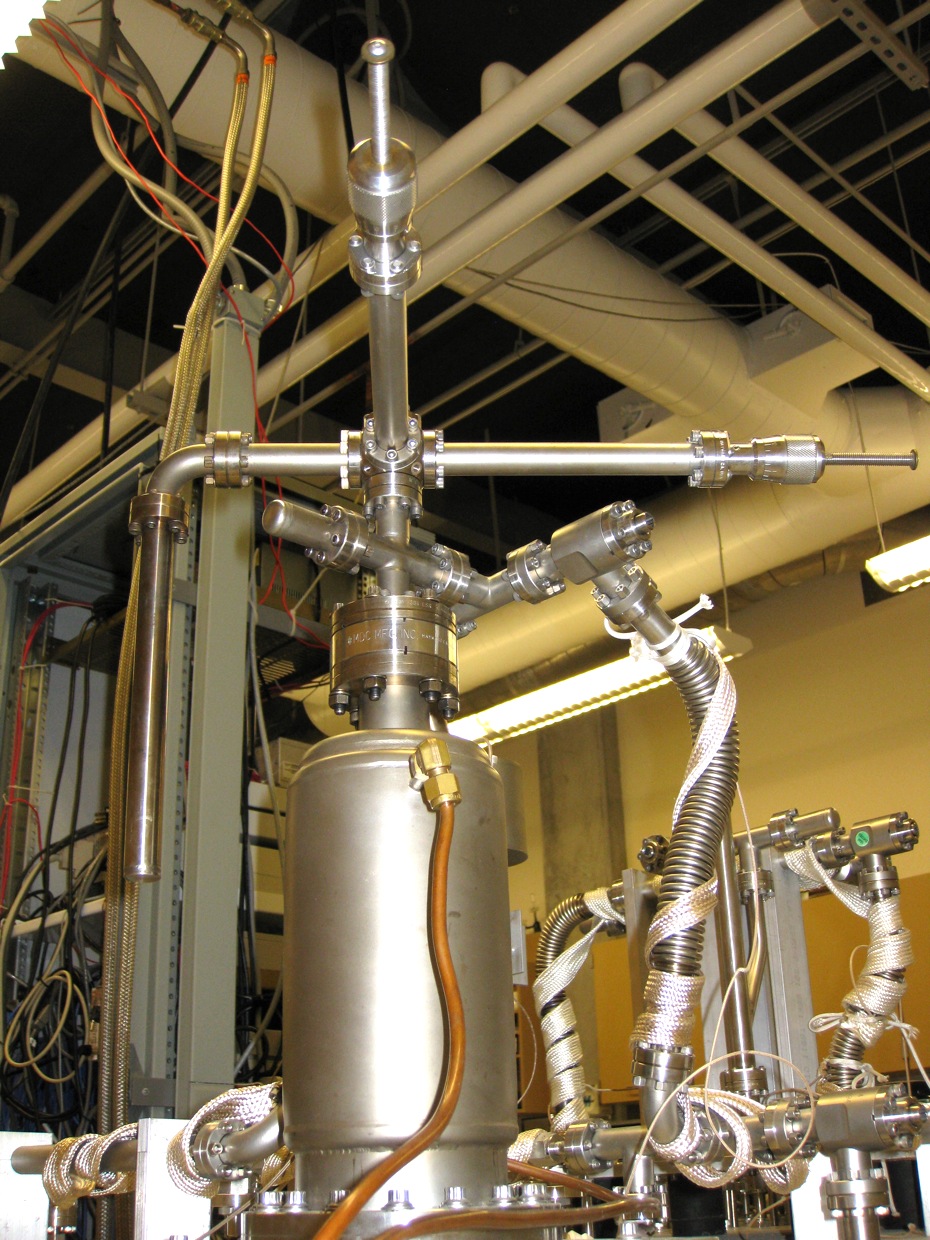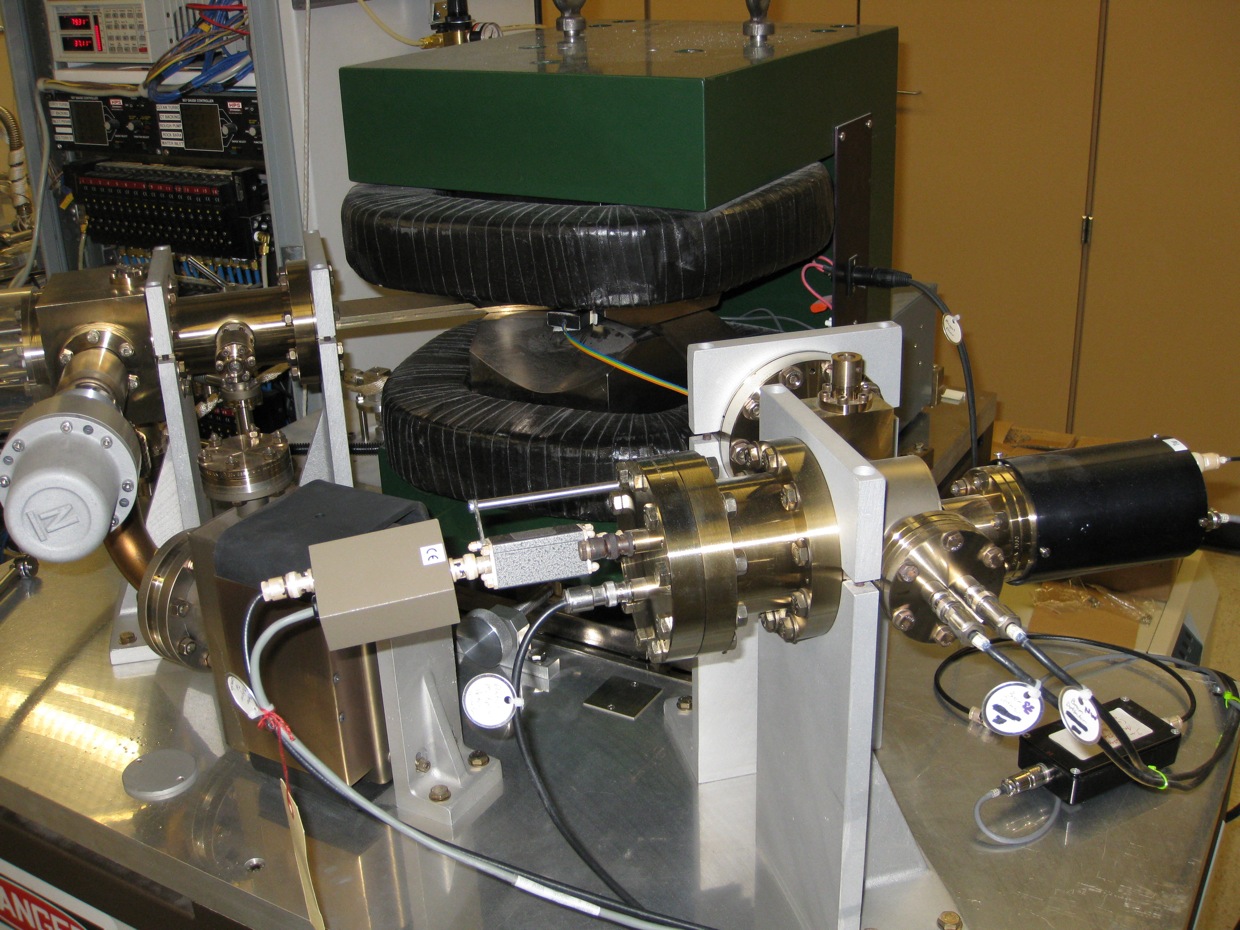Rock Dating And Permeability
 In addition to water samples, the system is designed to accommodate rock samples for
fluid inclusion and crystal lattice analysis. The "rock line" is outfitted with a
rock crusher and a furnace where the samples can be crushed or heated to release gases.
The main components of the Noble Gas laboratory are an extraction line and a mass
spectrometry system consisting of two mass spectrometers (MS): a Quadrupole MS and
a Magnetic Sector-Field MS.
In addition to water samples, the system is designed to accommodate rock samples for
fluid inclusion and crystal lattice analysis. The "rock line" is outfitted with a
rock crusher and a furnace where the samples can be crushed or heated to release gases.
The main components of the Noble Gas laboratory are an extraction line and a mass
spectrometry system consisting of two mass spectrometers (MS): a Quadrupole MS and
a Magnetic Sector-Field MS.
The extraction line is used for degassing tritium samples and extracting dissolved gases from copper tube samples. The system is held under high-vacuum by either a rough pump, or a turbo pump depending on the application. Samples are agitated to help extract dissolved gases. The extraction line is capable of extracting two copper tubes or four tritium samples simultaneously.
The quadrupole mass spec uses four, parallel, charged rods that isolate specific ions with given mass/charge ratios. Different electrical charges radio frequencies allow different ions to pass through the quadrupole to a detector. The quadrupole MS is used to quickly determine the abundance and isotopic analysis of most atmosphere gases. Our system uses a Stanford Research SRS – Model RGA 300 quadrupole mass spectrometer. Measurements for all gases except helium are made using this instrument. These includes: 28N2, 36Ar, 40Ar, 20Ne, 22Ne, 78Kr, 84Kr, 86Kr, 126Xe, 129Xe, 131Xe, 132Xe, 134Xe, 136Xe.
Like the quadrupole mass spectrometer, the sector-field mass spectrometer uses ions' mass/charge ratios, but in this case, a magnet is used to deflect the ions into separate detectors. Our lab uses a Mass Analyzers Products – Model 215-50 Magnetic Sector Mass Spectrometer. This is used to precisely measure abundances of 3He and 4He. An electron multiplier is used to measures low-abundance ions with high-precision, while a Faraday cup measures more abundant ions.

Magnetic Sector-Field Mass Spectrometer
The mass spectrometry system line design is based upon the design described in “A Static Mass Spectrometer With Triple Collection For Nitrogen and Neon Isotopes”, Scripps Oceanographic Institute, S.I.O Reference Series # 93-11, September 1993. Atmospheric gas components are measured and removed using SAES getter technology (see SAES) and cryogenics. The system is held at high vacuum using a combination of rough pumps, turbo pumps, getters and ion pumps. The entire system is computer controlled through two computer systems utilizing National Instruments hardware and software.
Gas Standards - A tank of “dry” atmosphere is prepared as a daily standard. All Analytical calibrations are made using this standard. In additional, air equilibrated water samples, collected at different temperatures are analyzed as blind standards. Typically, four standards are analyzed for six unknown samples in a given day. The daily schedule is: two standards are run in the morning to ensure proper communication and re-center the peaks, 3 unknown samplers are run followed by a standard. If the standard is acceptable, three more samples are analyzed which are followed by a closing standard. In addition, one air equilibrated water sample is analyzed for approximately every ten unknown samples.
Data analysis – During an analysis, all pertinent information is collected by computer and imported to an Excel worksheet. Three files are produced for every one analysis. On a daily basis, these files are “compiled” into a single workbook using Visual Basic code developed in our lab. This code incorporates the daily standard runs and produces a final sample report. These reports are then reviewed by hand and used in the age calculation process.
